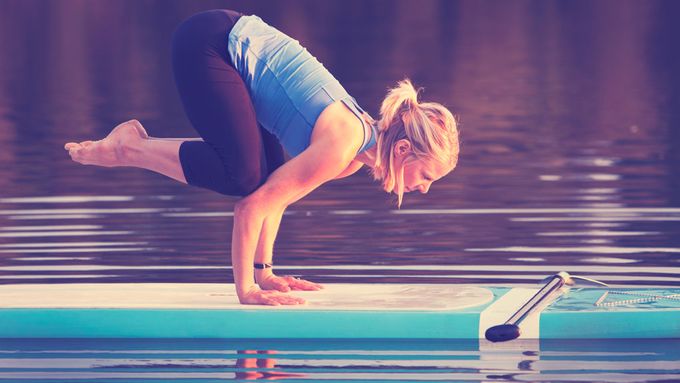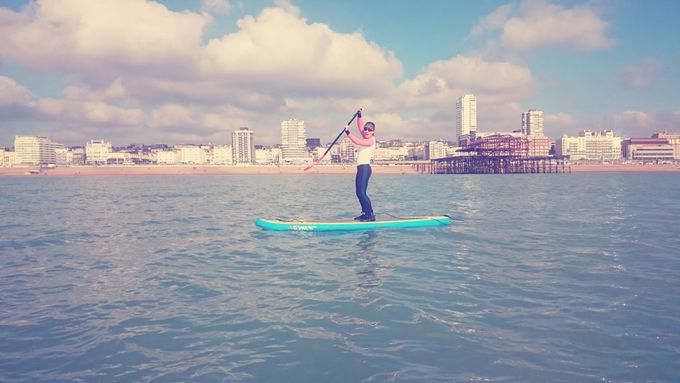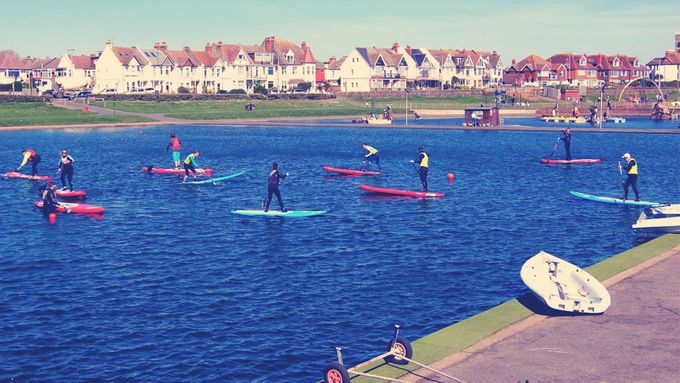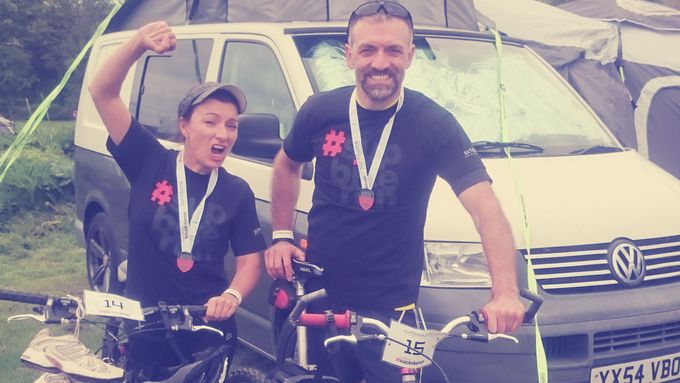
Remember that game you invented on holiday with your mates where you had to take a running leap onto a lilo floating in the pool and see whether you could ‘land it’, well, turns out you were onto something. Granted, there’s quite a bit more to standup paddleboarding than ‘land the lilo’, and we’d definitely call it a sport rather than a game, but the bones are there.
We can’t actually remember the last time we saw Cameron Diaz OFF a standup paddleboard
Difference is standup paddleboarding, or SUP for short, is now a thing. A big thing.
One of the fastest growing watersports in the world, everyone who’s anyone is having a go; we can’t actually remember the last time we saw Cameron Diaz off a standup paddleboard.

So what is it? Pretty much exactly what it says it is – pulling yourself through open water using a long, single-bladed paddle while standing on an oversized surfboard.
The combination of balancing and paddling engages every muscle from your core down to your feet
An all over body workout, the combination of balancing and paddling engages every muscle from your core down to your feet and reaching forward with your blade for every stroke is like contracting your abs into a crunch and holding a squat every time you paddle. All that fresh air and staring out onto the horizon must pack a hefty dose of feel good factor too.
We had a chat with Sasha Chisholm, who got into SUPing at Hove Lagoon Watersports to find out what all the fuss is about.

Hi Sasha! How did you get into standup paddleboarding?
I love anything to do with the water, so I’ve tried my hand at surfing, kitesurfing and windsurfing, but the weather conditions have to be absolutely optimum for you to get out on the water with those. When I moved to Hove and saw there was a watersports centre with standup paddleboarding at the end of my road, I went for it.
Is SUP not that dependent on weather conditions then?
No, it’s great like that; you can find somewhere to SUP in almost all weathers because you can do it on the sea, you can do it on rivers, and you can do it in confined water areas.
If you want a really serene workout, you can just go out on a calm and windless day, but if you want to push yourself harder physically and get a bit of an adrenaline rush, you can go out on a day when the waves are up and have more of a surf.

What do you get out of it?
I love the fact that you’re on the water, but you’re not confined in a heavy outfit like with scuba diving
I connected with it straight away. I love the fact that you’re on the water, but you’re not confined in a heavy outfit like with scuba diving, or having to manage a big sail like with windsurfing. You don’t have to wear a wetsuit and you don’t have to wear a life jacket, so as long as you’re up to a confident level of safety and have a leash attaching your ankle to your board, you can just go out for a paddle.
Just by balancing on the board you’re having a workout, but it’s not full-on power, it can be very gentle and it’s very accessible across generations too; I take my young nieces out with me.
It’s a great sport to add to your existing training plan because it’s fun, so you don’t really feel like you’re having a workout. I run and do yoga and definitely feel the benefits from SUP towards the muscles I train during those. My overall fitness is higher too.
A lot of people worry they won’t be able to balance on the boards, but they are wide enough to steady yourself pretty quickly
Can you pick it up from scratch?
Yes, for sure. It’s very accessible. A lot of people worry that they won’t be able to balance on the boards, but they are wide enough for you to steady yourself pretty quickly.
You get a two-hour introductory session and start by kneeling in the middle of the board on flat, confined water until you feel confident enough to balance standing, then after that you’re good to go. As long as you’re prepared to fall in a few times before you master it, you will get there and you’ll get there much quicker than you think.

Are there different types of boards?
There are lots of different types of paddleboard, but the most popular and definitely the best for beginners is the inflatable board. A lot of highly experienced paddleboarders still use the inflatable – they’re pretty rigid once they’re blown up and you can pack them down into a rucksack.
I’ve just started doing standup paddleboard triathlons too, and competed in the #supbikerun in May
So, you can do all sorts on your paddleboard then?
I do yoga on mine and there’s a whole series of events – there’s the UK SUP series, which is about 11 different racing events throughout the UK in one season.
I’ve just started doing standup paddleboard triathlons too, and competed in the #supbikerun at Exmoor National Park in May. There are two more #supbikerun events this year and I’m doing both of those too. Standup paddleboarding replaces swimming, so you do 3km on the board, 30km off-road mountain biking through the woods and a 5km off-road run.

Sasha’s top 3 tips for standup paddleboard beginners
1. Just go for it. Find out where your local club is and organise an intro session. It will give you the confidence to get out there and provide you with some invaluable lessons on reading weather and how to steer.
2. Don’t be intimidated. The worst that can happen is that you will fall off, but you’ll fall off attached to a big, inflatable board, so nothing bad is going to happen.
3. Look up. When you first start paddling the natural temptation is to look down at the board. For the best stability though, you need to keep your head up, your back straight and your body weight over your toes.